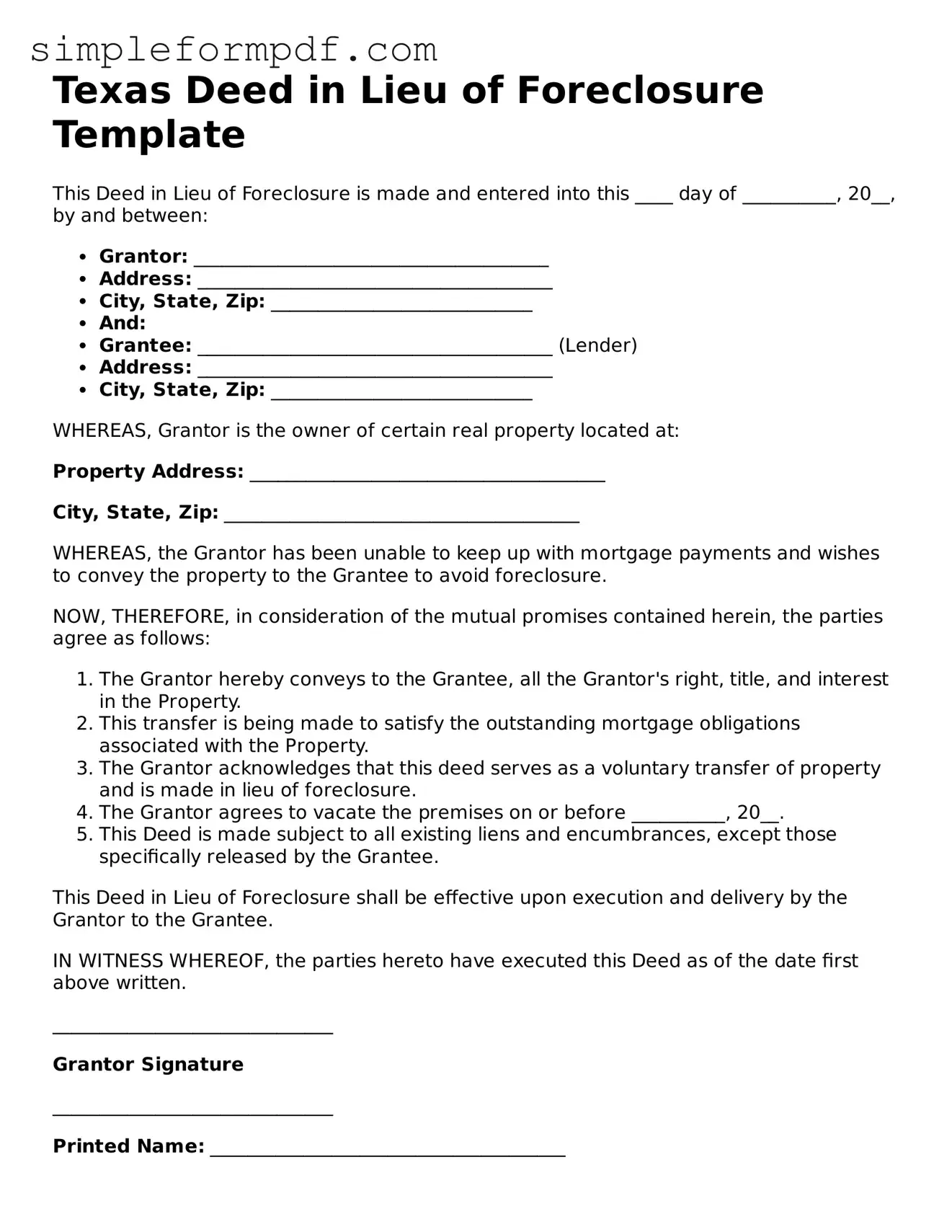Texas Deed in Lieu of Foreclosure Template
This Deed in Lieu of Foreclosure is made and entered into this ____ day of __________, 20__, by and between:
- Grantor: ______________________________________
- Address: ______________________________________
- City, State, Zip: ____________________________
- And:
- Grantee: ______________________________________ (Lender)
- Address: ______________________________________
- City, State, Zip: ____________________________
WHEREAS, Grantor is the owner of certain real property located at:
Property Address: ______________________________________
City, State, Zip: ______________________________________
WHEREAS, the Grantor has been unable to keep up with mortgage payments and wishes to convey the property to the Grantee to avoid foreclosure.
NOW, THEREFORE, in consideration of the mutual promises contained herein, the parties agree as follows:
- The Grantor hereby conveys to the Grantee, all the Grantor's right, title, and interest in the Property.
- This transfer is being made to satisfy the outstanding mortgage obligations associated with the Property.
- The Grantor acknowledges that this deed serves as a voluntary transfer of property and is made in lieu of foreclosure.
- The Grantor agrees to vacate the premises on or before __________, 20__.
- This Deed is made subject to all existing liens and encumbrances, except those specifically released by the Grantee.
This Deed in Lieu of Foreclosure shall be effective upon execution and delivery by the Grantor to the Grantee.
IN WITNESS WHEREOF, the parties hereto have executed this Deed as of the date first above written.
______________________________
Grantor Signature
______________________________
Printed Name: ______________________________________
______________________________
Grantee Signature
______________________________
Printed Name: ______________________________________
STATE OF TEXAS
COUNTY OF _____________________
Before me, the undersigned authority, on this _____ day of __________, 20__, personally appeared ____________________, known to me to be the person whose name is subscribed to the foregoing instrument, and acknowledged to me that they executed the same for the purposes and considerations therein expressed.
Given under my hand and seal of office this _____ day of __________, 20__.
____________________________________
Notary Public
____________________________________
My Commission Expires: ________________
